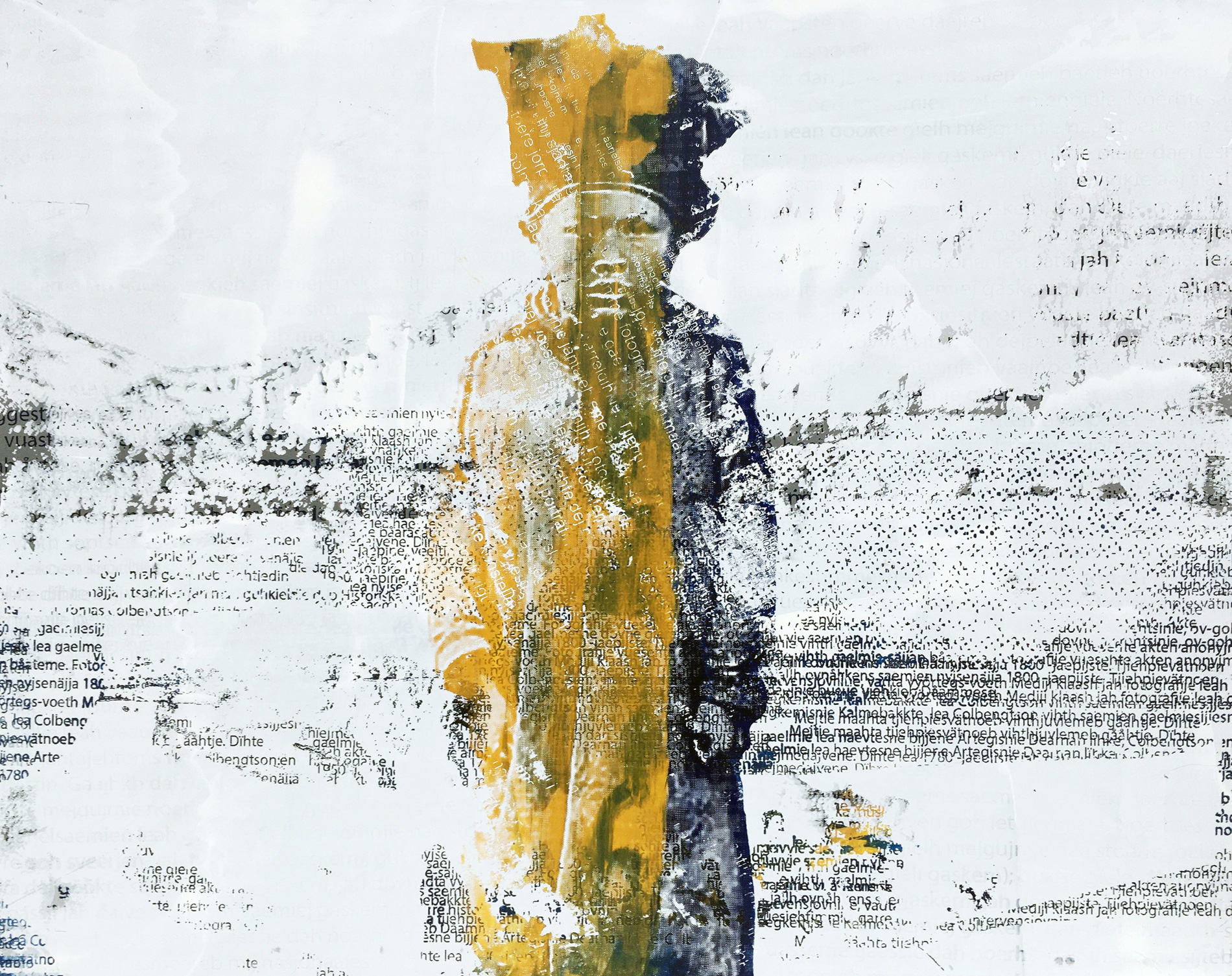

Photo: Elisabeth Ohlson


Giela dájva (Language landscape)
Tomas Colbengtson
Oil on aluminum


I come from the southern Sámi region and was born into the Christian faith; my older relatives were all profoundly religious and could quote their favourite verses of scripture by heart. At the same time, they still harbored rudimentary traces of pre-Christian animistic beliefs, which were never really spoken of – animism being the belief that the natural environment we live in is itself made up of living spirits. That we should traverse nature with care, being mindful of using its resources with minimal intrusiveness.
We should be hunt and fish prudently. In the old times, it was common to make offerings to special stones, lakes, or fells, where the gods lived. One’s entire existence depended on one’s relationship with the gods, who ensured that the weather, the hunting, reindeer-herding, and fishing were favorable. One could turn to the gods if one had special questions, or sought treatment or support of some kind. The landscape itself, with its animals, waterways, and fells, is at the core of Sámi identity, which does not disappear even if one has grown up in a city environment.
Therefore, the borders drawn by the States were like a knife that cut through the lives of all Sámi people, regardless of whether we lived in Sweden, Norway, Finland or Russia. It is an event that created a trauma, which has still not healed. We have become experts in survival, as well as diplomats, in order to deflect the authorities’ new initiative and rules. All Sámi have ended up on the periphery in one way or another.
I am myself an example of this as I have a Norwegian surname from my father’s Norwegian Sámi family, whereas my mother is from the Swedish southern Sámi side.
Originally, Sápmi was a whole region without borders, but the borders that were drawn in 1751 caused families and lands to be split apart. The closing of borders in 1919 was a hard blow to lifestyle and reindeer husbandry of the Sámi, as we were no longer able to migrate across the national borders, and this has caused lifelong trauma for all Sámi people.
Now, in 2020, the Coronavirus pandemic has cut off our opportunities to meet almost as the border closures of 1919 did. I realize now, that the reason I work as an artist is that I was born into this trauma, which became clear to me as I sat at my maternal grandfather’s old dammed-up boat landing, some 20 years ago. I then suddenly saw, with complete clarity, the total destruction of Sámi lives caused by the relentless politics of the Swedish state. The policies of the authorities have been so devastating that it almost begs the question whether we are even deemed human? All of us in Sápmi carry with us similar wounds, and the role of art is to render visible the blind spots, and even vast islands of white in our collective consciousness.





